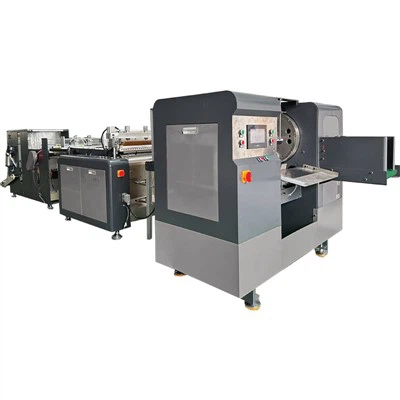Film Blowing Machines: The Technology Behind High-Quality Plastic Films
Film Blowing Machines: The Technology Behind High-Quality Plastic Films
Film blowing machines are at the heart of producing high-quality plastic films used extensively in packaging, agriculture, and industrial sectors. This technology enables manufacturers to create thin, durable, and versatile plastic films that meet a wide range of application needs. In this article, we’ll explore the working principle of Film Blowing Machine, their components, and how they produce films with exceptional quality.

What Is a Film Blowing Machine?
A film blowing machine is an extrusion device that transforms raw plastic pellets into continuous plastic films. These films are commonly used to manufacture plastic bags, wraps, liners, and other flexible packaging materials. The key innovation lies in inflating a molten plastic tube into a thin bubble, which is then cooled and flattened into a film roll.
How Does Film Blowing Technology Work?
The Film Blowing Process
- Melting and Extrusion Plastic pellets (usually polyethylene or polypropylene) are fed into the extruder barrel, where they are heated and melted into a viscous liquid.
- Die Extrusion The molten plastic is forced through a circular die, forming a thin-walled tubular film.
- Blowing Air into the Tube Air is blown through the die to inflate the tube into a bubble. The size of this bubble controls the film width and thickness.
- Cooling The bubble passes through cooling rings where air cools the film, solidifying the plastic.
- Collapsing and Winding The bubble is flattened by rollers into a lay-flat tube and wound onto rolls for further processing or conversion.
Key Components of Film Blowing Machines
- Extruder: Melts and pushes plastic pellets.
- Circular Die: Shapes the molten plastic into a tube.
- Air Ring: Supplies cool air to solidify the bubble evenly.
- Nip Rollers: Flatten the bubble into film sheets.
- Winder: Collects the finished film on rolls.
Advantages of Film Blowing Machines
Uniform Thickness and Strength
The controlled inflation and cooling process ensures the film has consistent thickness and mechanical strength, essential for packaging durability.
Versatility in Film Properties
By adjusting process parameters such as temperature, air pressure, and extrusion speed, manufacturers can produce films with various thicknesses, widths, and physical properties tailored for specific uses.
Cost-Effective Production
Film blowing is a continuous and efficient process that allows large volumes of film to be produced quickly, keeping production costs competitive.
Eco-Friendly Adaptations
Recent advancements allow the use of biodegradable resins and recycled plastics in film blowing, promoting sustainability without compromising quality.
Common Applications of Blown Films
- Packaging Films: Grocery bags, shrink wraps, and food packaging.
- Agricultural Films: Mulch films and greenhouse covers.
- Industrial Liners: Protective sheeting and construction covers.
- Consumer Products: Trash bags and disposable liners.
Conclusion
Film blowing machines combine sophisticated extrusion and inflation technology to produce high-quality plastic films that serve diverse industries worldwide. Their ability to deliver consistent, customizable, and cost-effective films makes them a cornerstone in modern plastic manufacturing.
Understanding the technology behind film blowing can help businesses select the right machinery and optimize production for quality and efficiency. If you want to explore specific film blowing machine models or applications, feel free to ask! https://www.jiuyimachine.com/